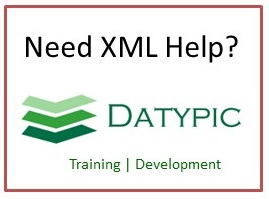PostPayable
The purpose of the PostPayable is to transmit data to create a payable open item in a payables application from the purchasing information generated in a purchasing application. The PostPayable may also update the General Ledger, depending on the specific architecture of the financial applications. The scope of the PostPayable indicates that the supplier's invoice is ready to be paid and has already been approved before the information moves to the accounts payable application. An approved invoice is also known as the voucher. OAGIS will define the scenario of invoices that get matched within the accounts payable application in a separate Business Service Request later. Some financial applications have the general ledger and accounts payable databases tightly integrated where updates to the accounts payable application are automatically reflected in the general ledger balances.
The PostPayable will transmit all information needed for both the accounts payable and the general ledger. Other applications allow the general ledger balances to be updated separately from the accounts payable. The second model illustrates that the combination of the PostPayable and PostJournalEntry will accomplish this scenario.
Element information
Namespace: http://www.openapplications.org/oagis/10
Schema document: PostPayable.xsd
Type: PostPayableType
Properties: Global, Qualified, ID: oagis-id-bd49c8be1a754bad9e3fdf12dc3d6e05
Content
- Sequence [1..1]
- ApplicationArea [1..1] Provides the information that an application may need to know in order to communicate in an integration of two or more business applications. The ApplicationArea is used at the applications layer of communication. While the integration frameworks web services and middleware provide the communication layer that OAGIS operates on top of.
- DataArea [1..1] Is where the information that the BOD message carries is provided, in this case PostPayable. The information consists of a Verb and one or more Nouns. The verb (Post) indicates the action to be performed on the Noun (Payable).
from type BusinessObjectDocumentType
Attributes
| Name | Occ | Type | Description | Notes |
|---|---|---|---|---|
| releaseID | [1..1] | NormalizedStringType | OAGIS Release this BOD Instances belongs or the OAGIS release that the derivative work is based on. | from type BusinessObjectDocumentType |
| versionID | [0..1] | NormalizedStringType | Indicates the version of the given BOD definition. | from type BusinessObjectDocumentType |
| systemEnvironmentCode | [0..1] | SystemEnvironmentCodeContentType | Indicates whether this BOD is being sent in a "Test" or a "Production" mode. If the BOD is being sent in a test mode, it's information should not affect the business operation. However, if the BOD is sent in "Production" mode it is assumed that all test has been complete and the contents of the BOD are to affect the operation of the receiving business application(s). | Default value is "Production". from type BusinessObjectDocumentType |
| languageCode | [0..1] | LanguageCodeContentType | Indicates the language that the contents of the BOD is in unless otherwise stated. | Default value is "en-US". from type BusinessObjectDocumentType |
Sample instance
<PostPayable releaseID="normalizedString"> <ApplicationArea> <Sender> <LogicalID>normalizedString</LogicalID> <ComponentID>normalizedString</ComponentID> <TaskID>normalizedString</TaskID> <ReferenceID>normalizedString</ReferenceID> <ConfirmationCodes>... </ConfirmationCodes> <AuthorizationID>normalizedString</AuthorizationID> </Sender> <Receiver> <LogicalID>normalizedString</LogicalID> <ComponentID>normalizedString</ComponentID> <ID/> </Receiver> <CreationDateTime></CreationDateTime> <Signature> <!--any element--> </Signature> <ScenarioID>normalizedString</ScenarioID> <CorrelationID>normalizedString</CorrelationID> <BODID>normalizedString</BODID> <Extension> <AnyExtension> <!--any element--> </AnyExtension> <Amount/> <Code/> <DateTime></DateTime> <ID/> <Indicator>true</Indicator> <Measure/> <Name/> <Number>1.0</Number> <Quantity/> <Text/> <Time></Time> <ValueText>string</ValueText> </Extension> </ApplicationArea> <DataArea> <Post> <ActionCriteria>... </ActionCriteria> </Post> <Payable> <PayableHeader>... </PayableHeader> <PayableLine>... </PayableLine> </Payable> </DataArea> </PostPayable>



